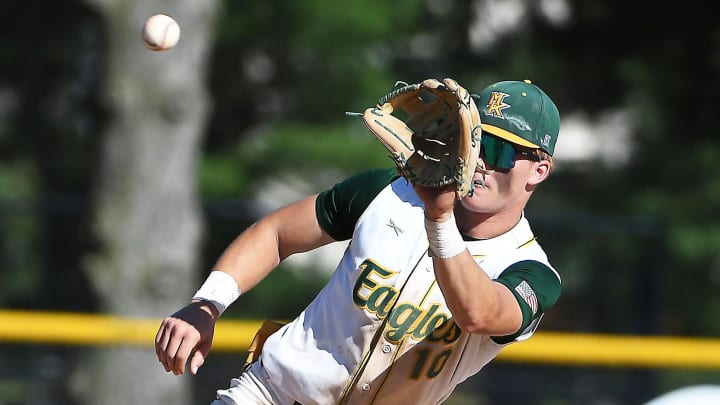How Washington Nationals Showed Their Second-Round Pick the Money

A team’s first-round pick doesn’t always get everything he has coming. The Washington Nationals proved that last month after the MLB Draft.
Second-round pick Luke Dickerson had a commitment to the University of Virginia to play for one of the top baseball programs in the country. But the Nationals wanted him to start his pro career now.
So, how does a team like Washington — which hasn’t had a winning season since winning the 2019 World Series — do it? One way is to pay over-slot money.
Each selection in the first 10 rounds of the draft has a slot value, which is what a team is expected to pay the pick. Each team also has a bonus pool.
The Nats had a $13.895 million bonus pool and paid out $14.575 million, which is 104.9%. Teams can go over the pool by 5% under certain circumstances.
Some pay the slot value for each player. Some pay less, some pay more. Sometimes strategy comes into play.
Dickerson was considered the No. 44 prospect by MLB Pipeline, so him falling to Washington in the second round fell in line with player rankings. But, he had leverage. The prep star had a scholarship waiting for him at Virginia.
So, the Nationals had to show him the money. To do that, Washington had to, let’s just say, borrow from other picks.
Baseball America outlined how the Nationals did it in a recent article, writing that they saved early and spent later.
Washington’s first-round pick was versatile infielder Seaver King from Wake Forest. He was draft-eligible after three years of college. He had the option to return, but Major League teams tend to gravitate toward high school players as they build their talent pipelines.
So the Nationals got King to agree to sign a contract that was $804,000 under his No. 10 overall slot value. Now, King still got paid — he agreed to a $5.150 million deal. But Washington got a discount.
The Nationals did the same with their supplemental first-rounder, Caleb Lomavita, but at only a $70,000 discount.
That helped make up some of the over-slot bonus they gave to Dickerson. Washington paid him $1.68 million over the slot value of $2.122 million. The Nationals basically gave Dickerson first-round money after taking him in the second round. It was the second-high over-slot bonus of the entire draft.
When MLB Pipeline’s updated Top 30 for Washington came out after the draft, Dickerson was ranked ahead of Lomavita and just behind King, showing that the Nationals knew what they were doing, both on draft day and in working its bonus pool.
